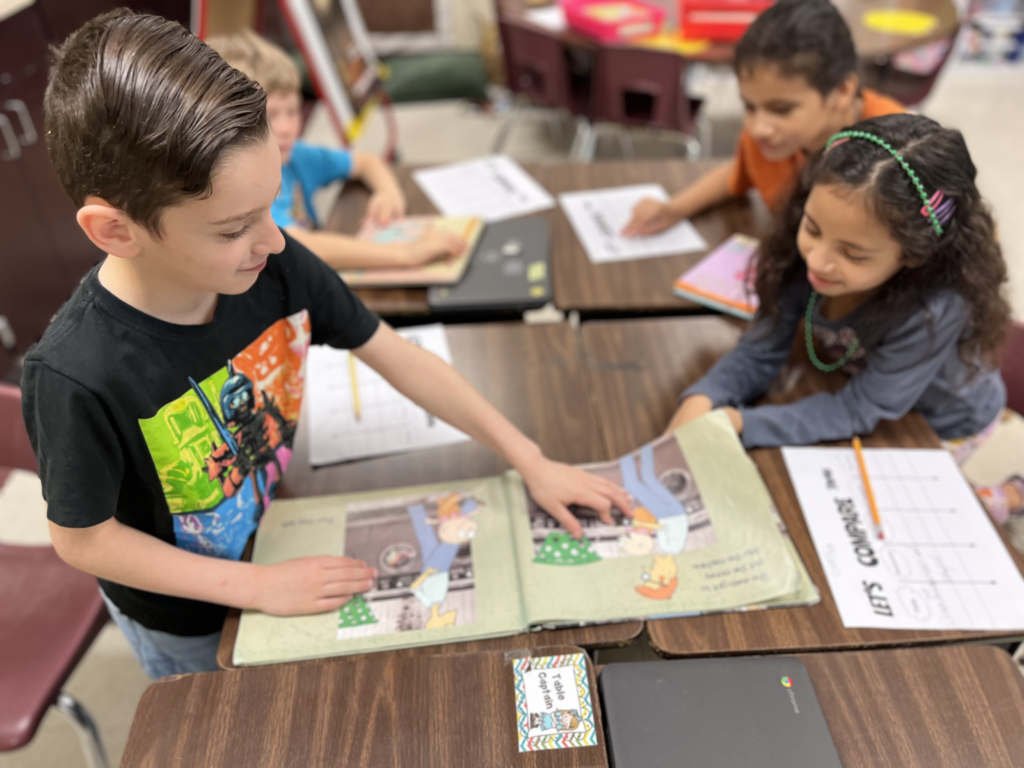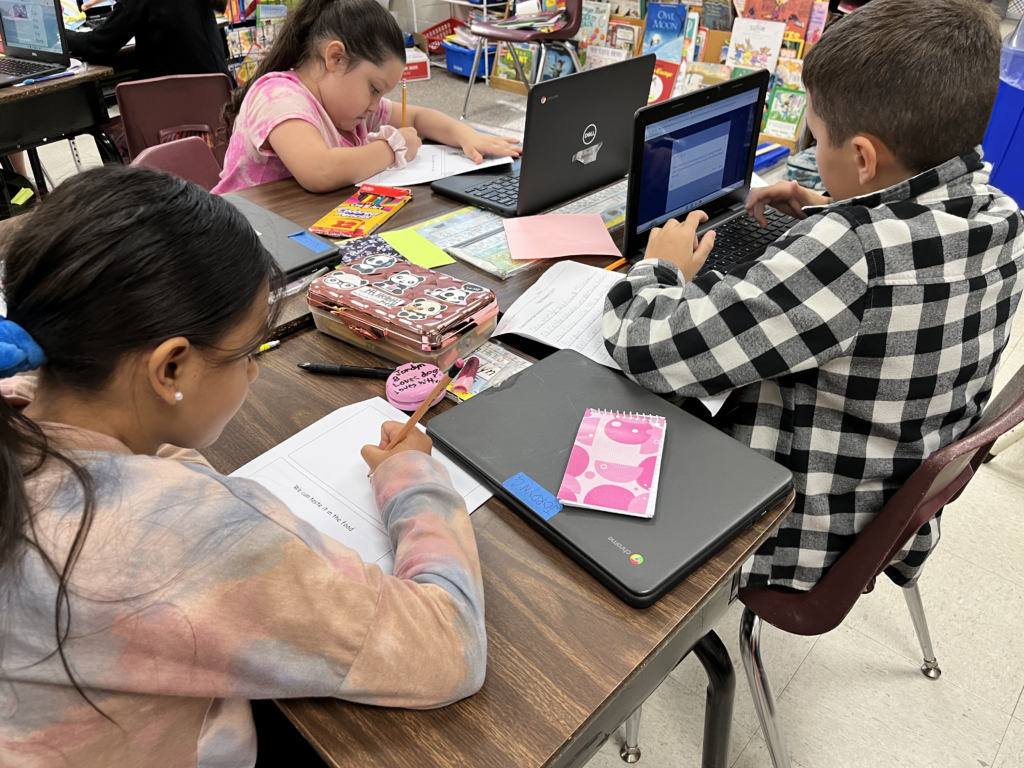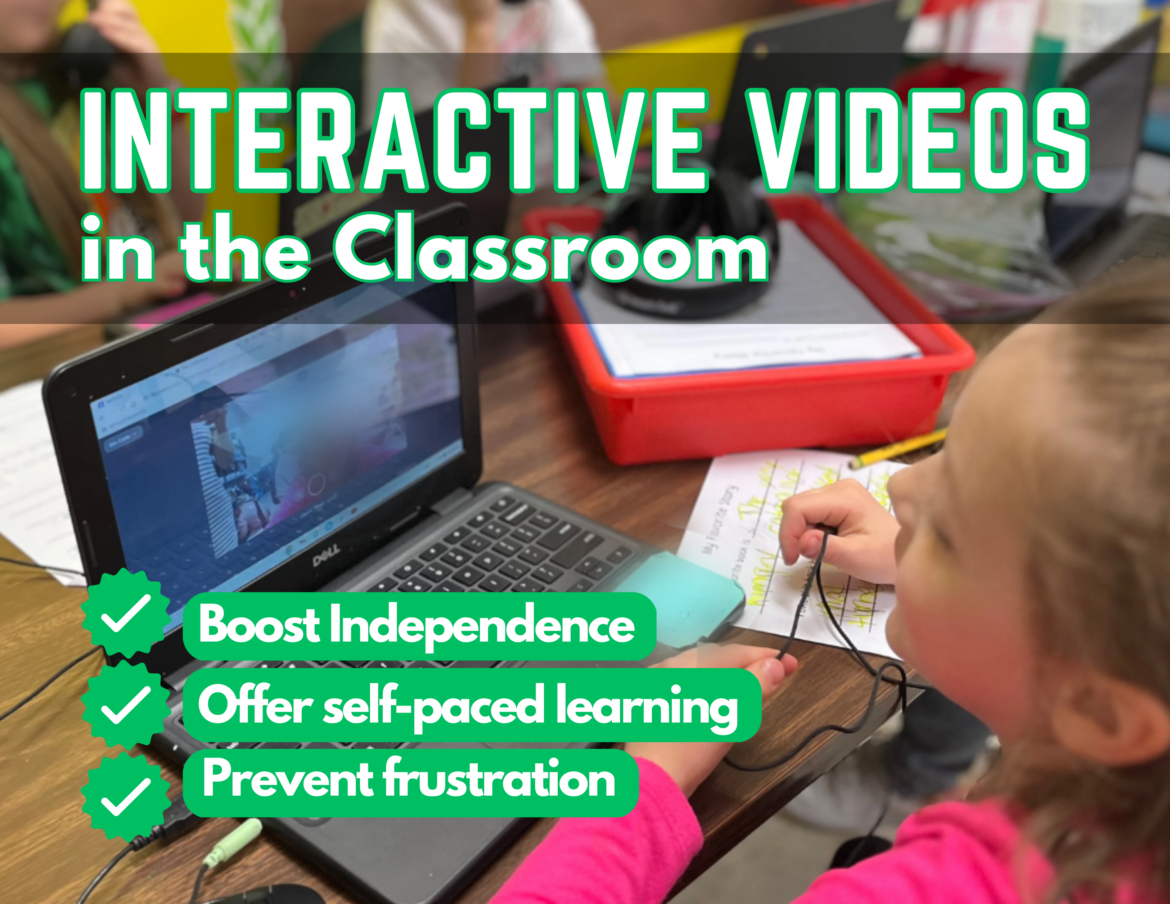Don’t you wish you could multiply yourself in the classroom? Interactive video is more than showing a YouTube in class! This teaching strategy can be used at all levels and in different ways to build independence, free yourself up for teacher-led small group instruction, and give students the opportunity to learn at their own pace.
Research on Interactive Video
Interactive video currently has an effect size of .58. This means that it has the potential to have a positive effect on student achievement. The VisibleLearningMetaX website defines Interactive Video as:
“A digital video technology that allows students to review segments of a recording in a non-linear way, as many times as they wish. Interactive video has been linked to reduced cognitive overload, greater attention, and greater reflection.”
All things that we want to afford for our learners! Think about how many times you have watched a video to learn something new or get a refresher on a topic. Being able to visually see and understand something allows for clarity and a deeper understanding. Personally, I use YouTube to learn more about new technology and to learn new recipes while cooking. More on that later!
A Reinforcement, Not a Replacement
“I’ve never had to repeat directions to students,” said no teacher, staff member, or central office personnel EVER! When creating an activity in the classroom, consider how you can utilize interactive video to enhance your instruction and essentially multiply yourself for your students. Weston Kieschnick says in his book, “Bold School: Old School Technologies + New School Technologies,” that:
“to enhance the effectiveness of this strategy, it should come after teacher-delivered core instruction.”
I understand this as “don’t let interactive video replace you, instead, let it reinforce what you have already taught to your learners.” Interactive video allows you to “interact” with multiple learners at the same time and in different locations, but it is not a replacement for your instruction.
An Example of Interactive Video
When working with 2nd graders on an author study project, the teacher I was coaching utilized interactive video. Using video, she provided directions for one part of the project that included project expectations. She also recorded a brief re-teach of her mini-lesson for another part of the project, including the same visuals she used in her whole group lesson. Throughout this project, her understanding and use of interactive video in her classroom grew. Each student could clearly see the teacher’s expectations and could re-watch videos as needed without interrupting the teacher. The teacher was then able to facilitate the learning, helping any students who were struggling or needed more scaffolding, while others continued to learn from her through video.


Boost Independence During Small Groups
When interactive video is implemented in the classroom, it increases the chances that students can learn something while away from the teacher. If a station rotation model or playlist model is implemented in the classroom, especially with elementary students, there are many times when students are required to be on task while away from the teacher.
In these models, the teacher is usually working with a few students in small groups on a specific skill or providing intervention. We know this small group instruction is where the powerful teaching moments happen. But oftentimes, this is the exact moment when the students who are not working with the teacher, decide that they can not function independently, and they HAVE to ask the teacher a question about what they are supposed to be doing independently.

With interactive video, or even video directions, included in station tasks, students are less likely to disrupt the teacher and small group instruction. They can also revisit instructions if needed. In other words, how can you maximize your small group time, and they can maximize their time on task.
Tools for Creating Videos for Stations
One tip for providing interactive video or video directions is to utilize Flip. With this platform, teachers can record task directions, generate a QR code for the video (on the site itself), then print the QR code and include it at the station/ task.
For those that have a Learning Management System (LMS), maximize what you already have access to! Use folders to organize the station tasks and record the videos directly in your LMS. This is a quick way to organize and house videos that students can refer back to.
Offer Self-Paced Learning
In addition to boosting independence, incorporating videos leads to empowering students to learn at their own pace. Providing interactive video for students to watch and then respond to, or offering videos with directions, allows students to pause, play, rewatch, and/or digest content at a pace that works for them.

If a student needs to take a bathroom break, they won’t miss the important content when it is in a video format. For example, I am no expert chef in the kitchen! When I am learning how to cook a new recipe, I turn to good old YouTube. With video directions on YouTube, I can understand measurements, pause and rewind to seek clarity on a step, and rewatch to see what my meal should look like.
Prevent Frustration
When delivering professional development, I love to use this Fold the Cheese clip from Schitt’s Creek. This is about the frustration you feel when you don’t fully understand something. And then someone else is getting upset with you because you don’t understand. Let’s avoid having students go through this frustration!
As a teaching strategy, interactive video works best when leveraged to enhance instruction. This consumption of materials is best maximized when the video is created by the teacher who students have the privilege to learn from every day. How will you implement interactive videos to boost independence, offer self-paced learning, and prevent frustration?
Lucia Soto is one of our 2023 Elementary Technology Conference (ETC) presenters! Don’t miss her session with Gilbert Barrera on “A Balanced Approach to Building Independence While Leveraging SeeSaw.”
ETC is coming in hot this June 11-13 in Galveston, TX. But don’t worry, it’s the coolest conference around. If you work in any role in elementary education, there’s something for you at ETC this summer. Don’t miss it!


3 comments
Lucia,
LOVE that you used this Schitt’s Creek scene as a reference – totally relatable!
Thank you! I am glad it made a relatable connection!
There seems to be a liberal use of non-linear when referring to an Interactive video. By the examples above and the article itself, is not every video interactive due to the ability to replay any segment, or to skip ahead?